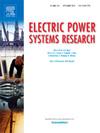基于CWT-YOLOv11的单相接地故障选线方法
IF 4.2
3区 工程技术
Q2 ENGINEERING, ELECTRICAL & ELECTRONIC
引用次数: 0
摘要
针对小电流接地系统单相接地故障选线困难的问题,提出了一种基于CWT-YOLOv11的配电网故障选线方法。首先,利用连续小波变换(CWT)将电流信号变换成特征映射,实现了从一维时间序列到二维空间域图像的转换。然后,将转换后的特征图拼接在一起,为基于深度学习的配电网络故障诊断提供有价值的材料。最后,利用改进的轻量级YOLOv11 (You Only Look Once version 11)网络训练特征图,提取故障特征,实现精确的故障选线。实验结果表明,该方法选线准确率达到99.99%,在保持高精度的同时显著减少了模型的参数个数和计算复杂度,实现了高效、精确的选线过程。本文章由计算机程序翻译,如有差异,请以英文原文为准。

Single-phase grounding fault line selection method based on CWT-YOLOv11
To address the difficulty of fault line selection for single-phase grounding faults in small current grounding systems, a fault line selection method for distribution networks based on CWT-YOLOv11 is proposed. First, the current signal is transformed into a feature map using Continuous Wavelet Transform (CWT), achieving the conversion from a one-dimensional time series to a two-dimensional spatial domain image. Next, the converted feature map is stitched together, providing valuable material for deep learning-based fault diagnosis in power distribution networks. Finally, an improved lightweight YOLOv11 (You Only Look Once version 11) network is used to train the feature map, extract fault characteristics, and achieve precise fault line selection. Experimental results show that this method achieves a fault line selection accuracy of 99.99%, significantly reducing the model’s parameter count and computational complexity while maintaining high precision, thus realizing an efficient and precise fault line selection process.
求助全文
通过发布文献求助,成功后即可免费获取论文全文。
去求助
来源期刊

Electric Power Systems Research
工程技术-工程:电子与电气
CiteScore
7.50
自引率
17.90%
发文量
963
审稿时长
3.8 months
期刊介绍:
Electric Power Systems Research is an international medium for the publication of original papers concerned with the generation, transmission, distribution and utilization of electrical energy. The journal aims at presenting important results of work in this field, whether in the form of applied research, development of new procedures or components, orginal application of existing knowledge or new designapproaches. The scope of Electric Power Systems Research is broad, encompassing all aspects of electric power systems. The following list of topics is not intended to be exhaustive, but rather to indicate topics that fall within the journal purview.
• Generation techniques ranging from advances in conventional electromechanical methods, through nuclear power generation, to renewable energy generation.
• Transmission, spanning the broad area from UHV (ac and dc) to network operation and protection, line routing and design.
• Substation work: equipment design, protection and control systems.
• Distribution techniques, equipment development, and smart grids.
• The utilization area from energy efficiency to distributed load levelling techniques.
• Systems studies including control techniques, planning, optimization methods, stability, security assessment and insulation coordination.
 求助内容:
求助内容: 应助结果提醒方式:
应助结果提醒方式:


